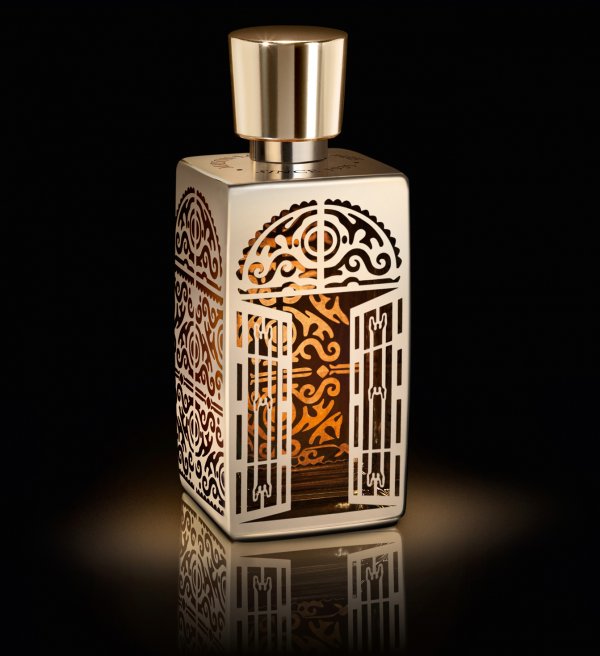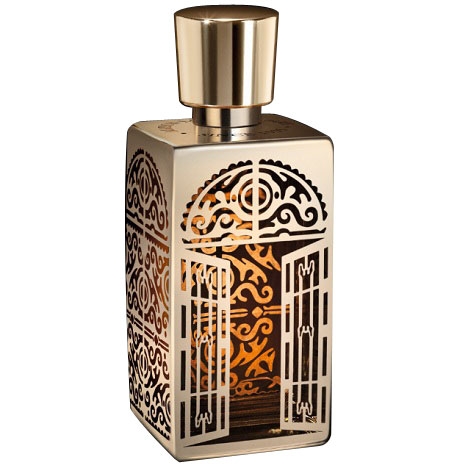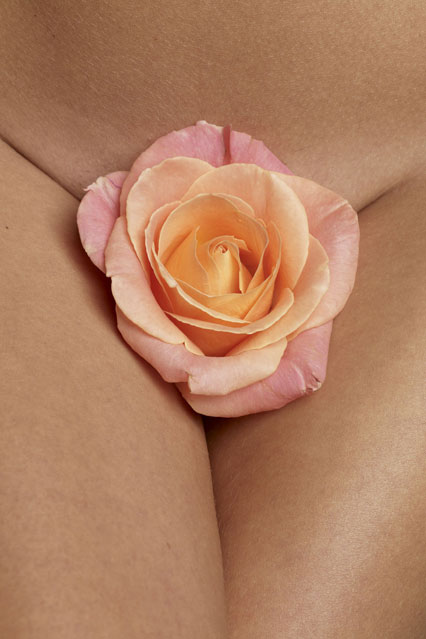Lancôme L'Autre Ôud (2013): A Symbolist Composition {Perfume Review & Musings}

I am surmising that the reason why Lancôme called their new addition to their high-perfumery collection Maison Lancôme, L'Autre Ôud is that more than its promised uniqueness, it is their manner of stating elegantly and upfront, that this is an alternative oud perfume without any oud in it...
Going beyond the first exotic oud fragrances that led you to believe that real oud existed inside your bottle of perfume - a feat really as the material is rare and dwindling - this is an oud coming of age which recognizes the truth that your oud is all smokes and mirror, that if oud still can be sourced in some select geographic locations in the world, you might as well think of it as one of those mute flowers of perfumery that cannot be extracted and need to be recreated. After the initial rush and gush of anticipation at the discovery of dark and handsome oud, the oud that is a fairy-tale for children, there is now the possibility of mature, connoisseur and lucid oud appreciation.
Lancôme ought to be complimented on taking the plunge of honest perfume communication, about oud.
At any rate, it had become more and more diffcult to hide the fact that the popularity of oud has been inversely proportionate to its rarity. In-between lies the art of perfumery, which is capable of great many things, like smelling like oud, perhaps even better than some quality of ouds, in the absence of it.
Lancôme specify from the start that what your nose will smell is artful,
"Maison Lancôme defies the laws of perfumery by writing L'Autre Ôud, a fragrance which reinvents the effluvia of this unique note without ever using the mythological ingredient. This prodigious feat is born out of the association of the most beautiful raw materials amongst which you will find the essences of Cypriol and Gaïac wood, the absolutes of myrrh and cistus as well as balm Gurjum." This, all said in the explanatory brochure placed in the packaging for the perfume buyer to find.
This a priori unecessary oud composition when oud scents flood the perfume counters can therefore lay claim to being refreshing at least on one count, in its way of offering an honesty-is-the-best-policy approach to the oud conundrum. The fact that the fragrance is part of the more connoisseur-oriented collection, Maison Lancôme, the equivalent of Les Exclusifs for Chanel and Dior La Collection Couturier Parfumeur helped open the way to divulging the nuts and bolts of oud.
But can L'Autre Ôud be not just about clever oud, but something unique too? It seems so, as perfumer Christophe Raynaud has composed an oud perfume which is both classical for its used of a rose-oud-saffron accord, yet manages to have it bring its own personality to the table.

How it Smells and What Impression it Makes on You
L'Autre Ôud opens on very warm, enveloping notes of oud and rose, with some mineral dust associated to the effect for a bit of modernity and high-tech hardness brought to a classical pairing of perfumery. It is a bit like seeing the intrusion of steel and glass in a mahogany and leather environment. There are chocolatey accents of patchouli. This oud mimics musk in its stealth presence espousing the contours of skin. It is also dry, with leathery, cow-hide nuances. Most of the diffusion seems to take place mid-air as you sort of smell a medium-range sillage which is spicy (saffron), strong and evokes the dry heat of the desert.
The diffusion is excellent, and to me, evokes readily the habit of fumigating one's body with the emanations coming from smoldering oud put on a brasiero. It is I think this quality that may also allow L'Autre Ôud to justify its name. It is an attempt to go beyond the liquid state of perfumery and recreates the meditative volutes of burning oud.
The Bulgarian rose note which escapes fresh and dewy from this ashy oud is beautifully fleshy, round, raspberry-like, and fruity. It is in fact quite an accomplishment to have kept the principle of water intact within the rose accord as it hovers above the smokiness of oud, without it furthermore smelling aquatic, but rather naturally fresh.
You can smell the rose almost in its entirety: there are petaly, waxy accents, and there are green, stemmy ones.

Rôses, Patrick Demarchelier for Lancôme via Vogue UK
In contrast to Annick Goutal Musc Nomade which felt like an authentic rose, oud and musk concoction escaping from the drapes of Saudi Arabian women clad in black, an ointment for the body, a recipe stolen from an Arabian home, L'Autre Ôud tells the story of a rose capable of thriving in the desert, mythically emerging from smokes and sand.
This is, in many respects, a symbolic composition, while Musc Nomade was a culturally correct one.
I marvel at the pleasure that the rose here can give, with its petals slowly unfolding, the tinge of saltiness in it, and the natural muskiness of a rose. Later it gets even moe pleasurable, so rose lovers ought to take note.
The warmth and ambery nuances of the composition reminds me also of Josef Statkus eau de parfum created by Fabrice Pellegrin in 2006, which had this meditative, incensey quality about it.
A characteritic trait of this composition is that it is a welcoming fragrance in keeping with the tradition of oud as a perfume of hospitality. Later in the drydown, the perfume takes on the color and aroma of Burgundy red wine smelling of that French-end-of-meal accord which bespeaks of conviviality and conversation amidst the music of eating with porcelain and silverware. There is even here, a suggestion of umami, of something like boar meat macerated in red wine. The thrill you get from discovering this nuance is purely hedonistic and affective at the same time. There is even a subtle nuance of brown mushroom. Your mind races back to a string of repasts held in the past.
Juliette has a Gun Midnight Oud, one of the very earliest oud adopters and in fact taste leaders in the cultural wave that has been created since then by the popularization of oud in European perfumery did something similar with their composition. They inserted into it a familiar accord, that subtle gourmand and celebratory quality resting not on sweets but rather the pairing of meat, wine and forest vegetables.
Chypres have a foresty motif within them thanks to the use of oakmoss and earthy, loamy notes, but there has been a development by French perfumery to pull it into the direction of something familiar and dear: the good meal, the rich meal, the meal which is accompanied by deep, flavorful dark wine and composed with the modern remnants of the more ancient after-hunting party meal. L'Autre Ôud taps deep into the smell of that archaic hunting-gathering structure from which our societies developed and mixes it with the spiritual evocation of wine. Towards the end, the perfume becomes more of a dark rose chypre steeped in saffron pistils and oud.
Perfumer Christophe Raynaud evidently paid great attention to the rose accord which traverses the perfume from beginning till the end. It is beautifully developing, rich, variegated. It is also, once more, symbolic because it is the brand symbol of Lancôme.
L'Autre Ôud at the end of the day manages to be both meditative and convivial, allying in its own way two threads of civilization: the more religious, meditative aspect of Muslim culture and the more convivial French one. Hospitality is the medium point around which the transition takes place. Oud passed around to guests, guests drinking red wine, rose in the middle of it as an olfactory bridge. Unlike with Portrait of a Lady by Frédéric Malle Edtions de Parfums where the rose is strong but more blended in, hiding behind a veil of mystery, the rose here unfurls retaining a 3-D quality and remains garden-fresh, with subtle green accents. It offers that hypnotic visual quality found in a stop-motion recording of the blooming of a rose.
In this "Other Oud", the rose is particularly lush and detailed, emulating the power of oud instead of blending within it.That also must mean something symbolically.










Is this for women or men ?
It's what the industry calls an unisex fragrance. Personally, I think it's for both. The distinction becomes even blurrier if you take into account the fact that in the Middle East men wear perfumes which would feel feminine in other cultures.